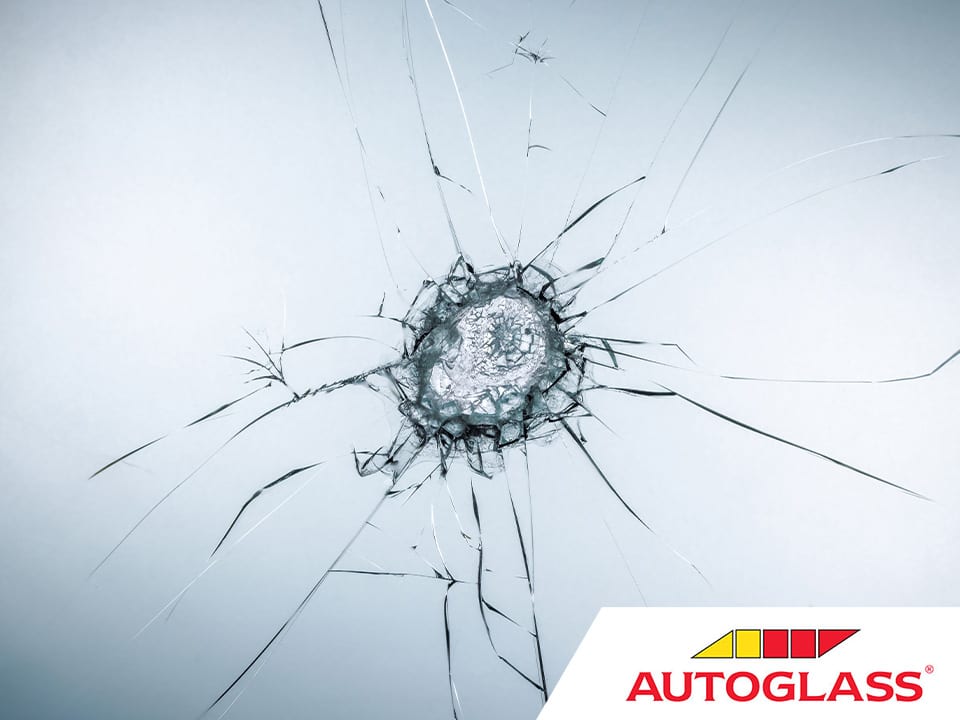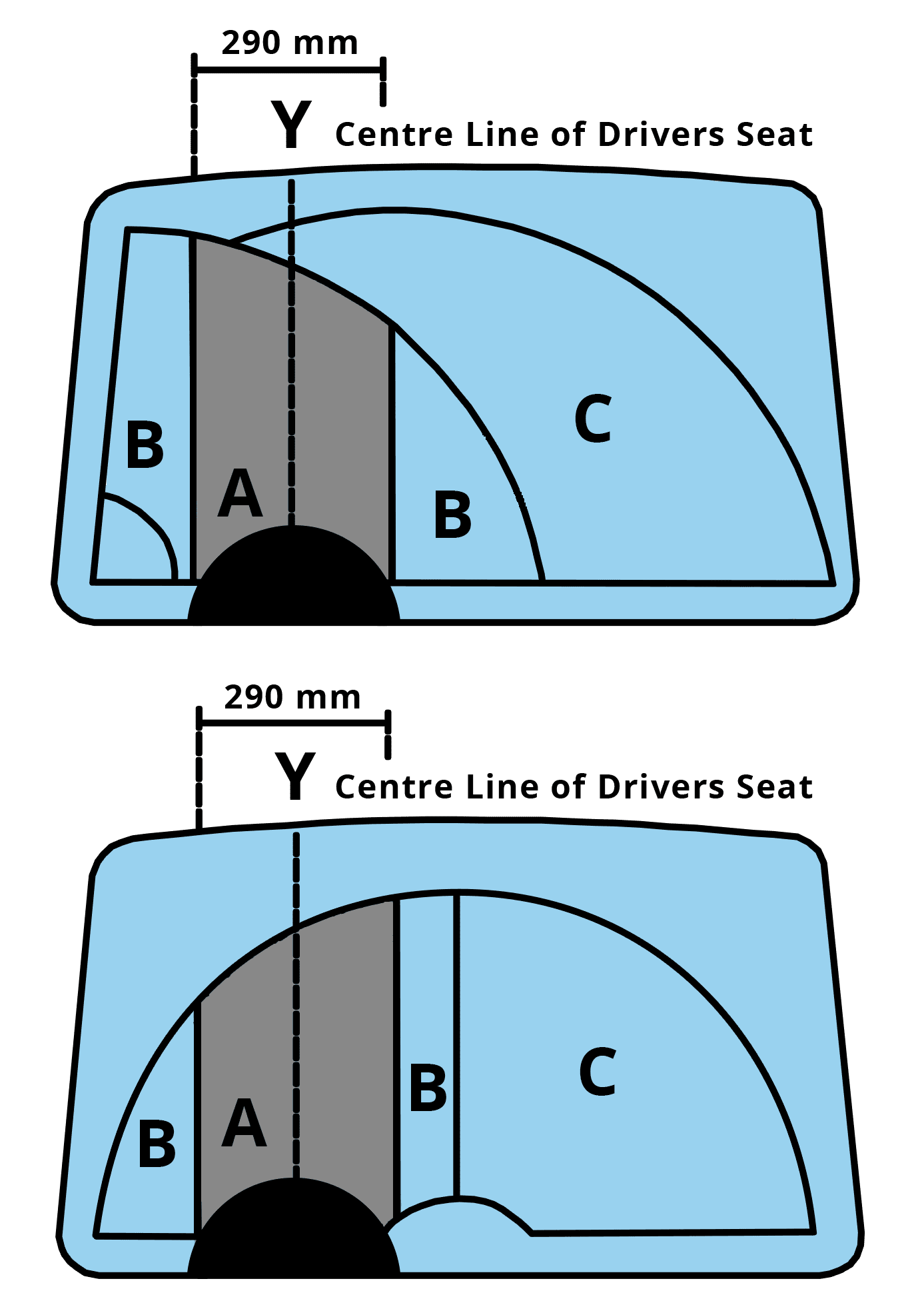
How your windscreen can fail the NCT
We all know the The National Car Test – the mandatory series of tests that every Irish motor vehicle must pass in order to be deemed roadworthy. First introduced in 2000 as a directive from the EU, the National Car Test is made up of a number of distinct sections, each tailored to stress-test various aspects of your vehicle’s performance and condition. This piece focuses on how the NCT looks at your windscreen and car glass – something of particular interest to us here at Autoglass®.
Methods of Testing:
The simplest way to get a handle on the role of glass in your NCT is through the various criteria that your car glass will be subject to as part of the test.
The first NCT glass check relates to the condition and security of your windscreen as well as all your side and rear windows.
Next your inspector will check that the windscreen is made using safety glass. Where windscreens, side or rear windows are fitted with glazing material other than safety glass, it falls to the vehicle owner to provide a certificate from the manufacturer or installer that states the glazing material is not likely, in the event of damage, to produce fragments capable of causing severe cuts.
Another crucial check confirms that there is an adequate view from the driving seat and that it is not interfered with by objects or stickers. Scrutiny relating to visibility is also applied to glass that has been tinted. If an inspector deems that the windscreen or front side windows are excessively tinted, your vehicle is likely on its way to a failing grade.
Types of Fail:
Issues discovered during your NCT fall under 3 distinct headings: Minor defects (MiD), Major defects (MaD) and Dangerous defects (DD).
In order to get a better handle on just what faults with your glass would constitute a MiD, MaD or a DD – we’re going to quickly run through the criteria of each class of fail.
Minor defects (MiD) – These defects are defined as having “no significant effect on the safety of the vehicle or impact on the environment”. If your NCT inspector encounters only minor defects over the course of your NCT, the vehicle will be deemed to have passed “Pending Re-Check”. This means you will only be issued your pass statement once your vehicle is re-presented for a second inspection with the specified issues rectified.
Major Defects (MaD) – This more serious class of defects is reserved for faults that “may prejudice the safety of the vehicle, have an impact on the environment, and put other road users at risk”.
Dangerous Defects (DD) – This is the most extreme bracket of defects applied to faults “constituting a direct and immediate risk to road safety”. The severity of Dangerous Defects is such that the vehicle can no longer be used on public roads under any circumstances.
Reasons For Failure:
Now you’re familiar with the different categories of fail you can encounter at the conclusion of your NCT test. Next, we can take a look at what sorts of faults fall into each category.
The tests your windscreen is subject to as part of your NCT can be summarised as examining two different aspects – Field of Vision and Condition of Glass.
Field of Vision –
Issues regarding the field of vision can only see you faced with two different reasons for failure – one MiD and one MaD.
A Minor Defect fail is earned when a windscreen is observed to have obstruction, objects or stickers within the driver’s field of view that materially affects drivers view in front or to the sides outside the cleaning area of the windscreen wipers.
A Major Defect fail is earned when your NCT inspector observes obstruction, objects or stickers within the driver’s field of view that materially affects the driver’s view in front or to the sides inside the cleaning area of the windscreen wipers affected or outer mirrors not visible.
Condition of Glass –
Issues relating to the general condition of your windscreen’s glass can elicit a number of different reasons for failure – from MiDs to MaDs and DDs.
Reasons for Minor Defect Fails (MiD) –
Your car will be met with a MiD if you windscreen is damaged or discoloured beyond acceptable limits (outside cleaning area of windscreen wipers).
Your vehicle will also be subject to a MiD fail if the opening mechanism of your driver’s window is not operating.
Reasons for Major Defect Fails (MaD) –
You will find yourself faced with a MaD fail if your Windscreen is observed to be totally missing.
A MaD is awarded if your windscreen is damaged or discoloured beyond acceptable limits inside the cleaning area of your windscreen wipers or if your outer mirrors are not visible.
You will also be on the receiving end of a MaD if your vehicle was first registered after 1 July 1964 and your windscreen, side or rear glass is not marked as automotive safety glass.
MaDs are also awarded if your vehicle was first registered on or after 1 January 1986 and your windscreen is not marked as laminated or marked to an equivalent certified standard.
A MaD is issued if your windscreen or windows are deemed to be insecure.
Your NCT inspector will also dole out a MaD fail if your non-glass side, rear windows and roof glazing are made of material that, if fractured, is likely to produce fragments capable of causing severe cuts to a person.
If your side or rear window are so damaged that it obstructs the driver’s view, you will also be in line for a MaD fail.
Finally, you will also receive a MaD fail if the glass in your windscreen and front side windows has a light transmission level of less than 65%.
Reason for Dangerous Defect Fail (DD) –
Your car will only be awarded an immediate Dangerous Defect Fail if the visibility through the area inside cleaning radius of the windscreen wipers is observed to be heavily affected.
Acceptable Limits
The acceptable limits of damage to your windscreen is determined based on the location of the faults on your windshield. This graphic is perhaps the best way to get a handle on the different sections that your windscreen is divided into as part of your NCT check.
As you can see, your windscreen is divided into 3 different parts – Zone A, Zone B and Zone C.
As per the NCT Guide:
Damage within Zone A can be contained within a 10mm diameter circle and have a maximum of two defects provided they are more than 100mm apart.
Faults within Zone B can be contained within a 20mm diameter circle or hairline cracks up to 30mm long. Once again, providing there is a maximum of two defects and they are more than 100mm apart.
Damage within Zone C can be contained within a 40mm diameter circle. In this instance, there can be a maximum of three defects provided they are more than 100mm apart from one another.
In Conclusion
Ultimately, if you are properly prepared, you have nothing to fear from your NCT test. If you’ve run through this article and are concerned your windscreen is not in pass-worthy condition, don’t fear, Autoglass® are here to help. Book an appointment with one of our mobile windscreen technicians, to make sure your car glass is gleaming in advance of you next NCT check.
We hope you found this article illuminating. Don’t forget to check the Autoglass® blog again soon for more guides, explainers, hints and tips. Safe Driving!
Book an appointment now
For a quick and easy way to make an appointment book online now.

